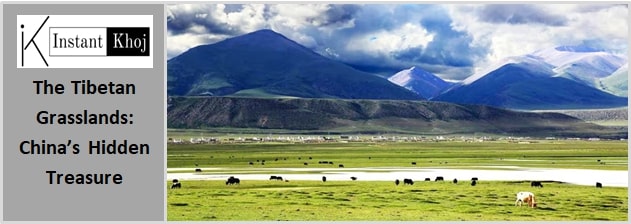Introduction
The Vedic Period marks a foundational phase in ancient Indian history. Spanning roughly from 1500 BCE to 600 BCE, it is named after the Vedas, the oldest sacred texts of Hinduism. This period laid the cultural, spiritual, and social framework of Indian civilization.
The Vedic Period is divided into two parts:
Early Vedic Period (1500 BCE – 1000 BCE):
-
-
Associated with the Rig Veda.
-
Aryans settled in the Saptasindhu (Land of Seven Rivers) region.
-
Society was pastoral and tribal.
-
Later Vedic Period (1000 BCE – 600 BCE):
-
-
Aryans moved eastward into the Ganga-Yamuna doab.
-
Rise of kingdoms (Mahajanapadas), permanent agriculture, and varna system.
-
Composition of Sama Veda, Yajur Veda, and Atharva Veda.
-
This era is significant because it shaped India’s early religion (early Hinduism), language (Sanskrit), society (varna system), and culture.
Vedic Period – MCQs
The Vedic Period is primarily known through:
A) Inscriptions
B) Vedas
C) Coins
D) Cave paintings
Answer: B) Vedas
The four Vedas — Rig, Sama, Yajur, and Atharva — are the main sources of information about this period.
Which is the oldest of the four Vedas?
A) Sama Veda
B) Atharva Veda
C) Yajur Veda
D) Rig Veda
Answer: D) Rig Veda
Rig Veda is the earliest and most important Veda, composed around 1500 BCE.
The people of the Early Vedic Period were primarily:
A) Traders
B) Warriors
C) Pastoral and agricultural
D) Fishermen
Answer: C) Pastoral and agricultural
They lived in tribes, reared cattle, and gradually adopted farming.
The term ‘Aryan’ refers to:
A) Race
B) Language group
C) Caste
D) City
Answer: B) Language group
‘Aryan’ originally referred to the Indo-European speaking people, not a race.
The main river mentioned in the Rig Veda is:
A) Yamuna
B) Ganga
C) Sarasvati
D) Indus
Answer: C) Sarasvati
While the Indus is mentioned, Sarasvati holds a central place in Rig Vedic hymns.
Which Veda deals primarily with chants and music?
A) Rig Veda
B) Yajur Veda
C) Sama Veda
D) Atharva Veda
Answer: C) Sama Veda
Sama Veda is known for musical chants used during rituals.
The varna system during the Early Vedic period was based on:
A) Birth
B) Wealth
C) Occupation
D) Education
Answer: C) Occupation
In early Vedic society, varna (social division) was flexible and based on one’s work.
Which Veda contains magical spells and charms?
A) Rig Veda
B) Sama Veda
C) Atharva Veda
D) Yajur Veda
Answer: C) Atharva Veda
It includes hymns for healing diseases, removing curses, and securing success.
The Vedic gods were primarily:
A) Idol-based
B) Nature-based
C) Abstract concepts
D) Warrior kings
Answer: B) Nature-based
Early Vedic religion was centered around natural forces — Agni (fire), Indra (rain/thunder), Surya (sun), etc.
The most important god in the Rig Veda is:
A) Agni
B) Varuna
C) Indra
D) Vishnu
Answer: C) Indra
Indra, the god of rain and thunder, is the most frequently mentioned deity in the Rig Veda.
The language of the Vedas is:
A) Prakrit
B) Hindi
C) Tamil
D) Sanskrit
Answer: D) Sanskrit
The Vedas were composed in Vedic Sanskrit, a refined and sacred language.
The Early Vedic political unit was:
A) Janapada
B) Grama
C) Sabha
D) Jana
Answer: D) Jana
‘Jana’ was the basic political unit — meaning tribe or community.
The king in the Vedic period was called:
A) Maharaja
B) Samrat
C) Rajan
D) Chakravarti
Answer: C) Rajan
The Rajan was the tribal chief who ruled with the support of assemblies like Sabha and Samiti.
Which assembly was responsible for general matters in Vedic society?
A) Sabha
B) Samiti
C) Sangha
D) Parishad
Answer: B) Samiti
Samiti was a general assembly that included all tribal members and helped in decision-making.
Vedic society was primarily:
A) Matriarchal
B) Egalitarian
C) Patriarchal
D) Democratic
Answer: C) Patriarchal
Society was male-dominated, and family lineage was traced through the father.
Final Thoughts
The Vedic Period laid the spiritual, social, and philosophical foundation of India. From the composition of sacred hymns to the beginnings of social structures like varna, its significance cannot be overstated. This era was the dawn of Indian civilization, and many concepts from this time still influence Indian culture today.
These MCQs cover the most important aspects of the Vedic age, making them excellent tools for revision, quizzes, or exam prep (UPSC, SSC, NDA, etc.).



